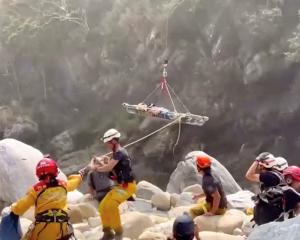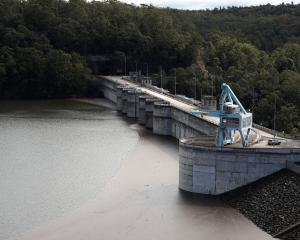
The researchers compiled data gathered by Nasa's Lunar Reconnaissance Orbiter as well as the Stratospheric Observatory for Infrared Astronomy airborne telescope, called SOFIA, for two separate studies.
In the first study, SOFIA was able to observe the water “on the sunlit surface of the moon,” according to Paul Hertz, director of the astrophysics division at Nasa’s Science Mission Directorate.
“We had indications that H2O — the familiar water we know — might be present on the sunlit side of the moon," Hertz said."Now we know it is there. This discovery challenges our understanding of the lunar surface and raises intriguing questions about resources relevant for deep space exploration.”
While researchers were relatively certain that water had been observed previously, it is only now confirmed.
“Prior to the SOFIA observations, we knew there was some kind of hydration,” lead study author Casey Honniball, a postdoctoral fellow at Nasa’s Goddard Space Flight Center, said in a statement.
“But we didn’t know how much, if any, was actually water molecules — like we drink every day — or something more like drain cleaner.”
The confirmation brings up several exciting possibilities.
“Without a thick atmosphere, water on the sunlit lunar surface should just be lost to space,” Honniball said. “Yet somehow we’re seeing it. Something is generating the water, and something must be trapping it there.”
The next steps include more SOFIA flights and infrared examinations of the moon as well as a water resources maps created by a new lunar rover that will land on the the moon’s surface in 2022.
In the second study, researchers looked at data from the lunar orbiter which combed through cold traps on shadowed parts of the moon and may have discovered hundreds to thousands of small ice patches that could cover as many as 15,000 square miles on the moon’s surface.
“If you can imagine standing on the surface of the moon near one of its poles, you would see shadows all over the place,” Paul Hayne, lead study author and assistant professor in the Laboratory of Atmospheric and Space Physics at the University of Colorado Boulder, said in a statement.
“Many of those tiny shadows could be full of ice.
“If we’re right, water is going to be more accessible for drinking water, for rocket fuel, everything that Nasa needs water for,” Hayne said.
Hayne added that rovers or astronauts would need to dig in these shadowed areas to determine how much ice is actually up there.
The more ice that’s on the moon, both studies concluded, if the astronauts needed less water astronauts transported from Earth, they could focus on mission-critical resources.
“If we can use the resources at the Moon, then we can carry less water and more equipment to help enable new scientific discoveries," Jacob Bleacher, chief exploration scientist in the advanced exploration systems division for Nasa’s Human Exploration and Operations Mission Directorate, said in a statement.













